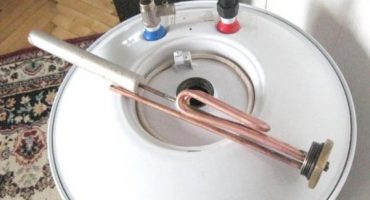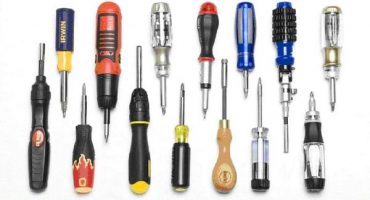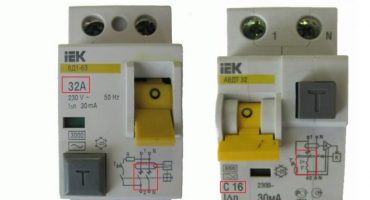The inner walls of the electric water tank are made of stainless steel, which has the ability to resist corrosion. But this is only the first one and a half to two years of operation. Over time, salts present in water as impurities are deposited on the walls, which leads to their gradual destruction. In order to increase the service life of the equipment, manufacturers complete boilers with a special rod. But there is one important point: the replacement of the old magnesium anode in the water heater should be carried out once a year, otherwise the benefit from it will be minimal.
What is a magnesium anode, how does it work

New Magnesium Anode
The anode is a grayish rod with a smooth surface. It is usually made in the form of a thin cylindrical element with a threaded metal stud at one end. The length of such a rod with a magnesium coating, depending on the model of the boiler, can be from 14 to 25 millimeters.
The principle of operation of the component is as follows. The anode is screwed into the threaded hole of the flange of the heating element (TEN) with a pin, after which this pair is placed inside the boiler body. After some time of operation, the surface of the magnesium anode ceases to be smooth. It takes on the appearance of a battered corrosion. In this way, it protects the walls of the boiler from destruction. If you change the part in time, then the inside of the water tank will remain intact for many years.
Thus, the anode is a consumable component. In scientific terms, all oxidative processes that occur during multiple cycles of heating the water inside the device, in the presence of a magnesium rod, affect it, but not on the walls of the tank. This is due to the fact that it is the rod that has the lower electrochemical potential.
How to determine if a part needs to be replaced

Replacement Magnesium Anode
Visually and by ear in the process of using the boiler, it is possible to determine whether it is time to change the magnesium anode installed inside, by the following signs:
- the boiler began to heat up much longer;
- the device often turns off and on again;
- the hot water flowing from the tap became cloudy with an unpleasant odor;
- noises are heard during operation of the water tank.
If at least one of the above signs is present, you should think about replacing the magnesium anode - an inexpensive consumable element that can act as a "victim".
The process of dismantling the old and installing a new rod
The process of replacing the magnesium anode in the boiler of Drazhitsa and other manufacturers is quite simple. Everyone can remove the old anode from the water heater and install a new one in its place, even without special skills. But when carrying out this procedure, it should be borne in mind that each manufacturer has its own modification, respectively, only original components are worth buying. Therefore, preference in this regard is best given to visiting a service center or a specialized outlet.
The procedure consists of several intermediate steps. At the first step, it is necessary to disconnect the boiler from the electrical network and drain all the liquid from it.The check valve will help speed up this procedure, but it would be wise to pre-connect the hose so as not to splatter everything around.

Water discharge from the boiler
In the next step, unscrew the casing, which is located at the bottom of the tank. After that, the thermal sensor and flange will be visible. The last two are also subject to dismantle.
Further actions: by lightly swaying the heater is drawn out. Due to the fact that the heating element is covered with salt deposits, some difficulties may arise at this stage, therefore, it is necessary to proceed with caution in order to avoid damage to the part.

Disconnecting the heater
The next step is to dismantle the anode that has expired, which is located next to the heating element. Often only an empty pin is found, which is a vivid demonstration of the destruction of magnesium. In any case, the part must be removed from the socket.
Before installing a new magnesium anode, you need to perform a procedure such as removing scale from a heating element. For this purpose, you can use a conventional screwdriver. If the coating is too hard and cannot be removed mechanically, citric acid will be a good option.

Descaling the heater
It is done like this:
- 40-50 grams of citric acid are dissolved in 1 liter of pure water.
- A heating element is placed in the resulting mixture for approximately 48 hours.
- After two days, the heater is removed, washed.
In the last step, after performing all of the above actions, the boiler is going back to working condition. The next step is to check the device for correct functioning.

Installation of a heating element and a magnesium anode
When the water heater is ready for operation again, the tap opens, the tank is filled with cold water. At the same time, the tap from which the hot liquid flows must remain open. When water flows out of it, it will mean that the boiler is full. It is not necessary to close the “hot” valve immediately: it is necessary to allow the tank and pipes to rinse, to get rid of dirty liquid.
When the water flowing out of the mixer becomes completely clean, the faucet closes. After this, let the boiler stand for at least 30 minutes. This method will help to get rid of the condensate that has accumulated on all surfaces. You must also make sure that there are no leaks.
How to increase the life of the device

By following simple rules, you can significantly extend the life of your electric heating tank.
Key recommendations:
- The presence of noise during the operation of the product indicates the formation of a large amount of scale inside the device, therefore, it is necessary to perform cleaning.
- The presence of a filter in the cold water supply system to the boiler significantly reduces the concentration of impurities deposited on the surfaces.
- If, during a visual inspection of the anode, it is found that it has worn out by at least 50%, the moment is near to replace it.
- It is not worth starting the boiler after removing the old rod, but before installing the new one, since all impurities in the absence of a magnesium anode will settle on the heater, the inner walls of the tank.
- The boiler cleaning procedure should be carried out at least once a year.
As for the last point, in the case of intensive operation of water heating equipment, experts recommend changing the magnesium anode more often than once a year. At the same time, all internal surfaces of the boiler should be carefully examined for the presence of harmful bacteria on them. The latter does not affect equipment operation to a greater extent: accumulated pathogens can cause serious harm to everyone who uses water from a heating tank.
Taking into account the above information, one can easily draw the following conclusion: timely replacement of the anode is the key to a long uninterrupted operation of the device and cost savings that can be spent on expensive repair of the product.



